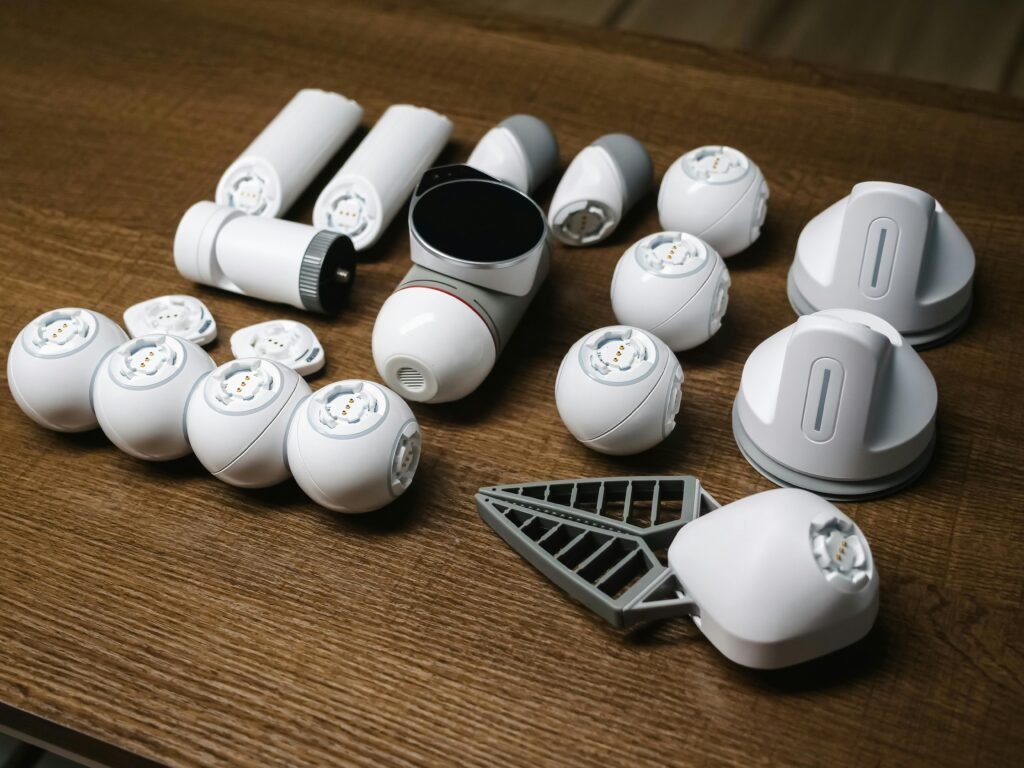Unlocking Potential: Exploring IoT in Manufacturing
The Internet of Things (IoT) is redefining industries across the globe, with manufacturing standing out as a prime beneficiary. By interconnecting machinery, monitoring performance, and collecting data, IoT brings forth a world of opportunities. This outline explores the role of IoT in manufacturing, detailing its advantages, challenges, and future prospects.
Introduction
The Internet of Things (IoT) refers to the network of interconnected devices that communicate and share data, creating a seamless flow of information. In manufacturing, this means machines, sensors, and software working together to optimize processes and improve productivity. The relevance of IoT in this sector is hard to overstate; it’s changing how factories operate, from reducing downtime to enhancing product quality.
IoT is transforming manufacturing in a host of ways. Picture a factory floor where every piece of equipment is connected, capable of monitoring its performance and alerting operators to potential issues before they escalate. This is not just a futuristic vision; it's becoming the norm. The shift from reactive to proactive maintenance, the ability to track materials in real time, and the automation of routine tasks are all made possible through IoT. As we dive deeper, we'll explore how these technologies are not only making processes more efficient but also reshaping the entire landscape of manufacturing.
The Impact of IoT in Manufacturing
The manufacturing landscape is undergoing a significant shift, largely due to the increased connectivity that the Internet of Things (IoT) provides. Factories are no longer just rows of machines; they are now intricate networks of devices that communicate in real time.
Benefits of IoT Connectivity
This connectivity offers several advantages:
- Monitoring Equipment Performance: Machines can be monitored continuously, allowing for immediate insights into performance metrics.
- Tracking Inventory Levels: Real-time updates on inventory help in managing stock efficiently.
- Predictive Maintenance: By analyzing data from connected devices, manufacturers can predict maintenance needs, reducing downtime.
For instance, some facilities report productivity boosts of up to 20% after implementing IoT solutions.
Adoption Trends
According to a recent study:
- Approximately 70% of manufacturers are now utilizing IoT technologies.
- This reflects a stark increase from just a few years ago.
Transformative Impact
These systems are about more than just upgrading machinery; they’re about creating smarter processes. With the right IoT tools, manufacturers can make data-driven decisions that lead to:
- Improved operational efficiency,
- A more agile, responsive manufacturing environment,
- Readiness to meet fluctuating market demands.
Data-Driven Insights
The interconnected devices help minimize downtime and streamline workflows. The data collected is invaluable as it:
- Provides a clearer picture of production cycles,
- Reveals inefficiencies that can be addressed.
Conclusion
Every bolt, sensor, and algorithm contributes to a broader understanding of the production process. The transformation goes beyond just technology—it's about reshaping how manufacturers approach their operations in a digital age.
Defining Key Components of IoT in Manufacturing
At the heart of IoT in manufacturing are several core technologies that enable connectivity and data exchange. These elements work together to create a synchronized ecosystem, enhancing productivity and efficiency.
Sensors
Sensors are the foundation of IoT in manufacturing. They collect real-time data from machines, products, and environments. For instance, temperature sensors can monitor the conditions of materials, while vibration sensors can track the performance of machinery. This data provides valuable insights into operation status and helps identify any issues before they escalate.
Cloud Computing
Once data is collected from sensors, cloud computing steps in for storage and processing. This technology allows large amounts of data to be stored remotely, making it accessible from anywhere. Manufacturers can analyze trends, perform data analytics, and generate reports without the need for extensive on-site hardware. This not only reduces costs but also fosters collaboration among teams, as insights can be shared and acted upon quickly.
Connectivity Protocols
To facilitate communication between devices, various connectivity protocols are employed. Technologies such as Wi-Fi, Bluetooth, and MQTT (Message Queuing Telemetry Transport) ensure that devices can talk to each other efficiently. This seamless communication provides real-time feedback, enabling quick decisions that can keep production lines running smoothly.
Data Analytics and Machine Learning
With the vast amount of data generated, simply collecting it isn't enough. This is where data analytics and machine learning come in. By applying algorithms to the data, manufacturers can uncover patterns and predict outcomes. For example, they can identify maintenance needs or forecast demand, enabling proactive management of resources.
Integration Platforms
Finally, integration platforms play a critical role in connecting various IoT systems and devices. These platforms enable different technologies and software applications to work together, ensuring a cohesive operation. They allow manufacturers to manage everything from supply chain processes to equipment monitoring, providing a holistic view of the manufacturing ecosystem.
Together, these components create a powerful framework that enhances productivity and drives efficiency. By integrating sensors, cloud computing, connectivity protocols, data analytics, and integration platforms, manufacturers can unlock the full potential of IoT, positioning themselves for success in an increasingly competitive landscape.
Advantages of Implementing IoT in Manufacturing
Manufacturing has always thrived on efficiency, but the promise of IoT goes beyond traditional improvements. Here’s a closer look at how IoT is changing the game.
-
Increased Efficiency
With IoT, machines are equipped with sensors that collect data in real-time. This data can pinpoint inefficiencies in processes, enabling manufacturers to fine-tune operations on the fly. For instance, if a production line is running slower than expected, IoT systems can alert managers so they can investigate and address the issue immediately. By cutting down on waste and optimizing workflow, manufacturers can boost their overall output without the need for significant new investments. -
Predictive Maintenance
Rather than waiting for machines to break down, IoT enables predictive maintenance that can significantly reduce downtime. Sensors can monitor the condition of equipment, detecting signs of wear and tear before they escalate into more serious problems. This way, maintenance can be scheduled at the most convenient times, preventing costly interruptions and ensuring that equipment runs smoothly. This proactive approach helps save both time and money, allowing manufacturers to keep production lines operational. -
Enhanced Supply Chain Management
IoT provides unprecedented visibility into supply chains. Connected devices can track inventory levels in real time, allowing companies to manage stock more effectively. For example, smart shelves can automatically reorder products when they reach a certain level, preventing stockouts and overstock situations. This kind of continuous monitoring facilitates smarter logistics planning and helps in maintaining a steady flow of materials, ultimately leading to better customer service.
-
Improved Quality Control
Quality assurance is critical in manufacturing, and IoT enhances this aspect through continuous monitoring. Sensors can detect deviations in product specifications, allowing manufacturers to address issues before defective products leave the factory floor. This not only reduces waste but also ensures that customers receive products that meet quality standards. Improved quality control leads to higher customer satisfaction and a stronger brand reputation. -
Employee Safety and Health
Safety is paramount in manufacturing environments, and IoT can bolster workplace safety through smart monitoring systems. Wearable devices can track employees’ movements and alert them to potential hazards, such as dangerous areas or equipment. Additionally, sensors can monitor environmental conditions, such as air quality or excessive noise levels, ensuring a healthier workplace. By prioritizing safety through technology, companies can reduce accidents and create a more secure work environment.
In summary, implementing IoT in manufacturing presents a multitude of benefits that help drive efficiency, cut costs, and improve product quality while keeping employees safe. As these technologies continue to evolve, their potential to transform manufacturing operations will only grow, paving the way for smarter, more responsive factories.
Real-World Applications of IoT in Manufacturing
To understand the real impact of IoT in manufacturing, it's helpful to look at companies that have successfully embraced these technologies. Here are a few notable case studies:
General Electric (GE)
Digital Wind Farm Initiative:
- IoT Implementation: Hundreds of sensors deployed on each turbine.
- Data Collected: Wind patterns and equipment performance.
- Results:
- Real-time adjustments for optimized energy output.
- Increased efficiency and reduced operational costs.
- Reported 10% increase in energy production in some cases.
Siemens
Amberg Electronic Plant:
- IoT Solution: Fully automated and interconnected production line.
- Functionality: Sensors track the manufacturing process from start to finish.
- Benefits:
- Instant monitoring of machinery health and product quality.
- Significant reduction in errors and scrap rates.
- Over 75% of operations monitored in real-time, achieving remarkable productivity.
Toyota
Supply Chain Management Enhancement:
- IoT Usage: Tracking the movement of parts through factories and logistics centers.
- Key Features: Sensors provide real-time updates.
- Advantages:
- Real-time adjustments to manufacturing schedules.
- Prevention of bottlenecks.
- Optimal inventory levels, reducing excess stock and costs.
Small Metal Fabrication Company
Equipment Health Monitoring:
- IoT Adoption: Sensors track machine performance to predict failures.
- Outcome:
- Decrease in downtime and associated losses.
- Crucial improvements for their bottom line.
Conclusion
These examples illustrate the versatility of IoT in manufacturing, highlighting how a range of companies—from large multinationals to small businesses—have leveraged this technology to enhance efficiency, improve quality, and drive innovation. As more manufacturers explore IoT applications, the possibilities for maximizing productivity appear limitless.
Challenges Facing IoT Integration in Manufacturing
While the potential benefits of IoT in manufacturing are significant, several hurdles must be addressed for successful implementation.
Security Concerns
- Increased Risk of Cyberattacks: Interconnected devices raise susceptibility.
- Potential Consequences: Breaches can lead to lost data, halted production lines, and compromised safety.
- Solution: Implement robust security protocols to protect sensitive information and ensure operational integrity.
Data Management Challenges
- Information Overload: The influx of data from IoT devices can be overwhelming.
- Struggles in Handling Data: Many companies find it challenging to collect, store, and analyze data effectively.
- Impact of Poor Data Management: Missed insights and wasted resources.
- Solution: Develop a solid data strategy to manage and utilize information efficiently.
Skills Gap in the Workforce
- Insufficient Technical Knowledge: Employees might lack the skills needed to fully harness IoT solutions.
- Necessity of Training Programs: Essential to bridge the skills gap and equip staff with the necessary skills to operate new technologies.
- Investment in Human Capital: As manufacturing evolves, focusing on human capital becomes as crucial as investing in technology.
Conclusion
By acknowledging and addressing these challenges, manufacturers can better position themselves to leverage the full potential of IoT.
Best Practices for Adopting IoT in Manufacturing
Adopting IoT in manufacturing isn’t just a tech upgrade; it’s a shift in how you do business. Here are some practical steps to help you get started effectively.
-
Start Small
Before diving headfirst, begin with pilot projects. Identify a specific area where IoT could make a noticeable difference, like machine monitoring or inventory tracking. Test your ideas on a manageable scale. This way, you can figure out what works, what doesn’t, and what needs tweaking before rolling out a full-scale implementation. -
Invest in Training
Technology is only as good as the people using it. Chances are your team isn’t all tech-savvy, so consider investing in training. Make sure employees understand how to leverage IoT tools effectively. The better they grasp the technology, the more benefits you will see. -
Focus on Security
Security concerns are a reality in the IoT landscape. As you implement new systems, prioritize cybersecurity. Use strong authentication protocols, and make sure your data is encrypted. Regularly update your systems to fend off potential threats. A little diligence upfront can save you big headaches later.
- Leverage Analytics
Data is the lifeblood of IoT. Collecting it is only the first step; the real magic happens when you analyze it. Use analytics tools to turn raw data into actionable insights. These insights can help you make informed decisions, optimize processes, and predict trends. Don't just gather data—make sure you use it wisely.
By following these best practices, your journey into the IoT world can be smoother and more fruitful. Remember, it’s all about taking those first steps and learning as you go.
The Future of IoT in Manufacturing
As we look ahead, the landscape of manufacturing is poised for significant change, driven largely by the continuous evolution of IoT technologies. One emerging trend is the increasing integration of artificial intelligence (AI) and machine learning into IoT systems. This combination is set to elevate automation levels, allowing machines not just to react to data but to learn from it. For instance, an AI-powered system could analyze patterns in equipment performance data, predict potential failures before they occur, and recommend proactive measures, all without human intervention.
Another notable trend is the expansion of edge computing. Instead of sending all data to the cloud for processing, edge computing allows data to be processed closer to where it’s generated. This reduces latency and bandwidth use, enabling real-time data analysis on the factory floor. Manufacturers can respond to issues faster and operate with greater agility, resulting in optimized productivity.
Sustainability is also becoming a key focus area. IoT technologies can significantly enhance resource efficiency, from monitoring energy usage to managing waste reduction efforts. By integrating IoT with sustainable practices, manufacturers can reduce their environmental impact while also cutting operational costs.
Furthermore, as IoT solutions become more accessible, smaller manufacturers are likely to join the shift. The democratization of technology means that even shops with less capital can harness IoT's capabilities. This could lead to a wave of innovation, as nimble businesses find unique ways to leverage IoT for competitive advantage.
As IoT continues to advance, collaboration will play a crucial role. Manufacturers are likely to foster partnerships with tech companies to co-develop solutions tailored to their specific needs. This will not only accelerate the pace of adoption but also drive diversification in the types of solutions available.
In summary, the future of IoT in manufacturing is bright, marked by intelligent systems that can predict, adapt, and learn. As these technologies mature, they promise to redefine how factories operate, making them smarter, faster, and more sustainable than ever before. Manufacturers who embrace these changes early will position themselves as leaders in an industry increasingly driven by innovation.
Conclusion
As we've explored, the Internet of Things is much more than just a trend; it's a transformation poised to reshape manufacturing. We've seen how IoT enhances efficiency by providing real-time data and insights that lean operations rely on. From predictive maintenance that cuts costs to smarter supply chain management, the benefits are substantial. Employee safety also takes a front seat—IoT provides a safety net through constant monitoring and alerts, fostering a healthier work environment.
However, challenges lie ahead. Security concerns and a skills gap can throw up obstacles on the path to adoption. But with the right approach—starting small, investing in training, and focusing on security—manufacturers can navigate these hurdles.
The future looks bright. As technology continues to evolve, the integration of IoT with tools like AI promises even greater advancements. Embracing these innovations could redefine not just processes, but entire industries.
So, as you reflect on this information, consider your own operations. What could IoT do for you? Whether you're ready to dive in or just starting to explore, there’s no better time to think about your strategy for leveraging IoT solutions. It's not just about keeping pace; it's about finding new ways to drive efficiency and spark innovation.




